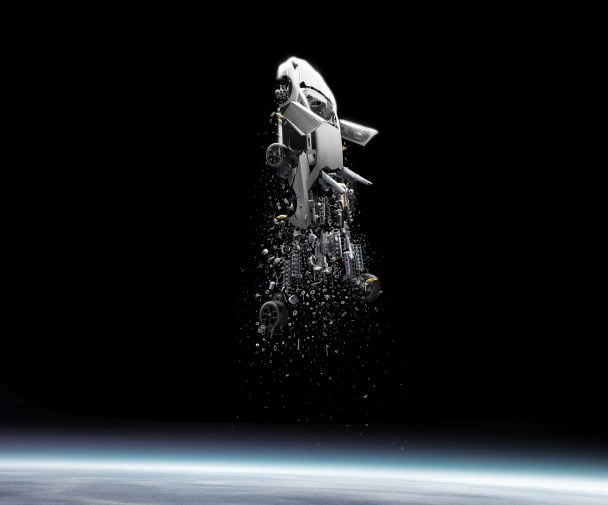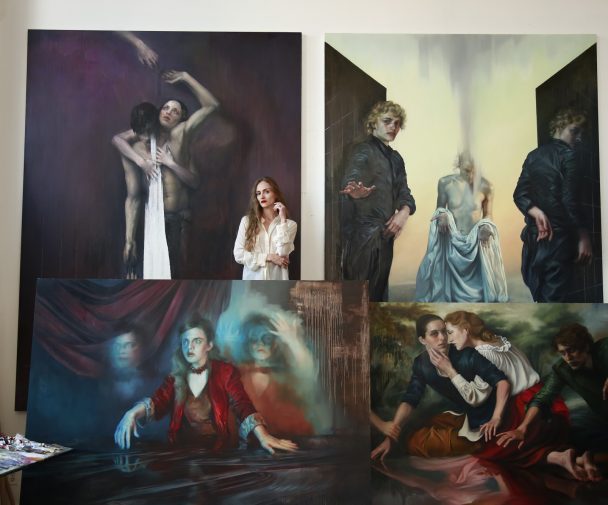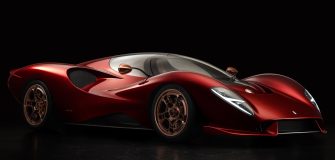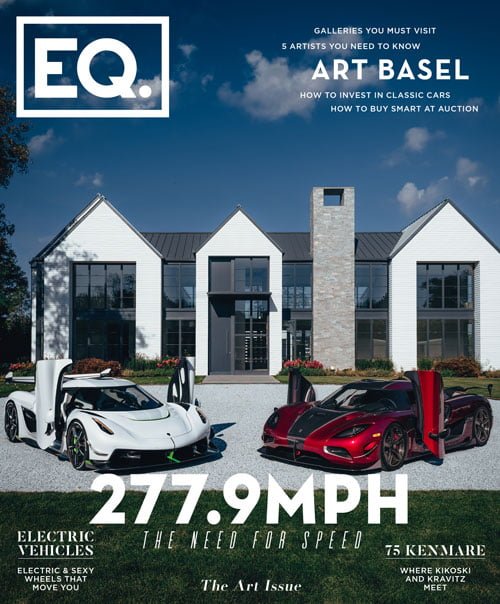
Daniel Hilpert: An Ode to Velocity in Vivid Brushstrokes
Impasto Technique Meets Classic Cars
BY EQ’s Editorial Team
May 15, 2024
In the pantheon of modern artistry, where the conveyor belts of innovation and tradition intertwine, Daniel Hilpert emerges as a champion of the impasto technique with an automotive twist. His latest oeuvre, a series of dramatically textured vehicular paintings, brakes sharply at the intersection of high art and high octane. Hilpert, rather like a mechanic armed with a palette knife, reconstructs the sleek forms of classic cars with a roughness that is both visually arresting and delightfully irreverent.
From the robust brushwork reminiscent of Frank Auerbach’s tactile cityscapes, Hilpert’s paintings throttle into view, each stroke loaded with the oil and pigment equivalent of petrol. Yet, one would be remiss to confine Hilpert’s creations to mere mimicry of the mid-20th-century expressionists. No, Hilpert is not just replaying the old tunes on a gramophone; he is remixing the classics for a postmodern pit-stop.
The collection, which could easily be mistaken for a glamorous lineup at an avant-garde motor show, features such models as the Aston Martin DB5 and Porsche 911, each rendered with a viscerality that seems to pulse with horsepower. Take for instance the depiction of the Aston Martin – not merely painted, but rather sculpted from swathes of grey and silver that dance around the canvas as if reflecting the shimmer of a rain-slicked British motorway.

In “The Red Beast,” as I have fondly come to title one of his untitled pieces, Hilpert’s application of crimson across the chassis is not unlike watching a matador’s cape in motion – a flick here, a swish there, each movement audaciously defying the bull of traditional automotive portraiture. This is not a car; this is a tempest on wheels, contained only by the edges of the canvas.
Hilpert’s daring use of color must be applauded, nay, cheered with the sort of enthusiasm usually reserved for a grand parade. In one painting, the orange of a Porsche is so vivid, so unapologetically brilliant, it recalls the high-octane hues of Jean-Michel Basquiat’s neo-expressionist icons. This audacious palette not only revives the spirit of each model but also imbues them with a character that is unmistakably Hilpert – part punk rocker, part Renaissance master.
His technique, thick with impasto, gives each painting an almost three-dimensional texture that begs to be touched. It’s as if Hilpert, in a fit of artistic fervor, decided that if the viewer cannot go to the racetrack, then the racetrack must come to the viewer – in every splendid, splotchy, and spirited detail.

However, while Hilpert’s bold textural play dazzles, it occasionally overshadows the subtler nuances of form and line that can imbue car designs with their legendary elegance. At times, the textural intensity might be seen as overpowering, perhaps at the expense of the sleek aerodynamics and design precision that car aficionados admire.
Furthermore, the compositional elements of Hilpert’s work show a canny understanding of dynamism and static tension. Each vehicle is poised as though caught in a snapshot, a fleeting moment between inertia and motion, a quality that injects a narrative element into the otherwise silent engines. It’s as though one can hear the growl of the engines through the thick layers of paint, a low rumble of anticipation before the storm of speed breaks.
But let us not drive past the subtle humor in his compositions; the slightly exaggerated curves of the cars, the almost cartoonish glint of the headlights, suggest a wry smile playing on the lips of the artist. It’s as if Hilpert whispers to us, “These are more than cars. They are dreams, aspirations, and, occasionally, compensations.”
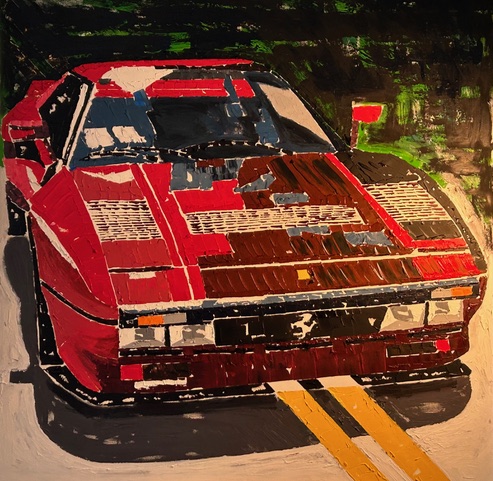
In conclusion, Daniel Hilpert’s automotive masterpieces, while a vigorous homage to the classics, evoke a dialogue between raw texture and refined form that merits contemplation. They remind us that art, like a good car, isn’t just about taking you from point A to point B—it’s about the sensation of the journey. Hilpert’s work, thus, challenges us to perceive beyond the conventional and appreciate the visceral essence of movement and machine. One can appreciate Mr. Hilpert for bringing such depth and dimension to the gallery.
